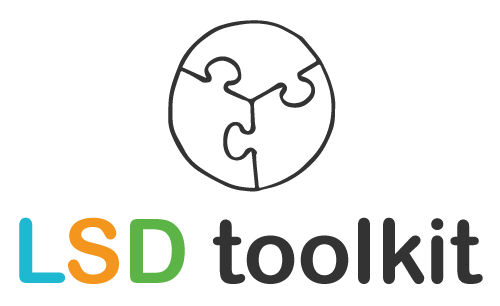No hard feelings for scaling frameworks such as SAFe, DaD and LeSS. But what we do have difficulty with is when frameworks are molded around a traditionally structured organization. Or if a framework is implemented directly from the start of agile working.
For example, Scrum is a learning process. Learning is a process of trial and error. By combining scrum with a scaling framework from the start, you deprive scrum teams of the chance to get stuck and find a solution themselves. Scrum itself offers sufficient starting points for good cooperation between teams and alignment with the organizational vision. Provided your organization and team structure is in line with this *.
Anyway, on this page some reading material about agile scaling that we think is worthwhile.
Feature teams
Agile scaling will not work if you do not first convert your component teams into feature teams. After all, scaling is intended for aligning teams working on the same solution in a chain . For example, you make televisions and you have to make sure that the screen that team 1 develops is compatible with the housing that team 2 develops. And that all teams are ready in time for. So make sure you put together teams that focus around a specific feature / product. Here you will find a nice exercise to gain insight into component vs feature teams.
Scaling Agile in Organizations – Henny Portman (***)
Okay, it is a bit boringly written and designed (and it is not going to live at all) but this book is a great introduction to the different scaling frameworks. Buy >>
* Agile working – and certainly also scaling – requires cross-disciplinary teams that cover the entire manufacturing process of a product / solution. Down with the silos! LSD author Gerjon Zomer made a simple movie about the difference between a component team and a feature team .
SAFe
The Scaled Agile Framework – from the sleeve of former IBMer Dean Leffingwell – is widely used in large, traditional organizations that want to shape the transition from Taylorism to Agile. It easily sells as a merger between agile and PMO. SAFe adds complexity to organizations, instead of the agile philosophy that is based on simplicity.
We have real reservations about the SAFe framework (based on both theory and work practice), but we would like to leave the floor to Bas Vodde *. Bas speaks out explicitly against SAFe for the first time in this podcast. His core message: SAFe has nothing to do with agile working. Couldn’t agree more.
Listen to the podcast (from 34:23)
LeSS
* Yes, Bas has come up with a competitive scaling framework (LeSS) together with Craig Larman. And no, Bas does not practice competition bashing, his opinion about SAFe is based on his search for truth, for what works. And to unmask the old world in an agile disguise. In my opinion, LeSS is just a much more logical upscaling of the scrum framework than SAFe. LeSS focuses on what the name says: Less. Simpler. KISS. Essence.
SAFe focuses on how to deal with complexity, LeSS looks at why complexity exists at all.
A must-read for every agilist – whether you want to scale or not – is the book Scaling Lean & Agile Development and the ‘partner book’ Practices for Scaling Lean & Agile Development. Craig Larman and Bas Vodde provide a complete overview of the agile domain. The core: create a culture of experimentation. Exit SAFe. A combination of knowledge, skills, self-knowledge and humor.
Brave New Work
An expanding organization has growing pains. That is logical and inevitable. Really? Aaron Digman – founder of The Ready – has inspiring ideas and insights about organizing organizations. Read his book Brave New Work and you are guaranteed to get hope that things can really be different. Also in your organization
Tips for good books on agile scaling? Mail it!
